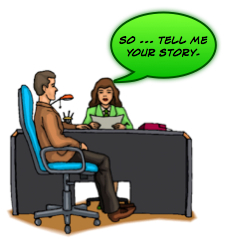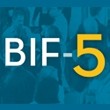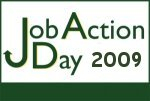I’ve been rummaging through my A Storied Career files, not because I need material (I always have far more than then I know what to do with), but just to make sure I don’t overlook some really good stuff, and a piece by Chris Brogan from more than a year ago caught my eye.
“Brands can be stories, and thus, you are a living story,” Brogan writes. Some of my colleagues who work consistently with branding and storytelling would likely go farther and say not that brands can be stories, but that brands are stories.
Brogan says you should “tell the story you told your audience you’re going to tell.” He means that if you brand yourself with a given story, you must consistently tell that story whether your “audience” is the readers of your online content, people who see your social-media profiles and comments, people you connect with face-to-face, individuals listening to you deliver a presentation, employers considering hiring you, and more.
Brogan tells how he brands himself:
I tell people daily that I’m here to help you understand how these tools develop community, improve your communications, and do a host of other things better than previous tools were doing them. I promise through my stories that you, too, can figure out how to build influence, develop relationships, and be more useful to your organization (be that a business, a nonprofit, or a circle of friends).
“If I let you down, I’m not keeping the promise of my story,” he says.
Here’s where the idea of “promise” comes into branding: My partner, Randall S. Hansen, has written: “Branding is best defined as a promise of the value of the product… a promise that the product is better than all the competing products… a promise that must be delivered to be successful. Branding is the combination of tangible and intangible characteristics that make a brand unique.”
And Brogan connects “promise” with “story” when he refers back to a piece from three years ago, about The Storyteller’s Promise. The piece relates specifically to delivering presentations, but we can relate his concepts to the broader picture of personal branding to a wider audience.
First, here’s what he says about presenting and storytelling:
As a presenter, you are a storyteller. If you don’t agree, you’ve already failed. … if you agree with this premise that you are telling a story via your materials and your presence before an audience, you have some responsibilities.
Here, I will adapt some of Brogan’s storyteller’s responsibilities to the broader idea of personal branding:
What is the purpose of your branding? Brogan asks: “What do you want from me?” (meaning what do you want from your audience?). When I was a speechwriter, I learned that a speech should always have a content goal and a feeling goal. What do you want your wider audience to know and what do you want them to feel? Your personal branding story should answer those questions.
What concise statement can you use to encapsulate your brand? Brogan talks about titles for presentations: “Give up ‘clever.’ Go instead for short, impactful titles.” The same applies to a branding statement about yourself — a concise, impactful statement supported by a story. See an example here of my partner’s pithy, story-supported branding statement.
How can you convey enthusiasm for your brand, especially in the first elements of your branding that your audience hears or sees? For example, how might you enthusiastically convey your brand story in a cover letter or in your opening words in a job interview?
What explicit promises will you make about yourself? For instance, in the branding I’m currently using about myself on LinkedIn, “Creative, energetic, intuitive wordsmith who helps students, careerists, and organizations tell their stories,” I make the promise that I’m creative, energetic, and enthusiastic.
How will you stay on track? Brogan talks about avoiding going off on tangents in presentations. When you are focused on your brand/promise/story, be sure you are consistent with your branded message and not wandering off that message. Think about the consistency of your branded message with every piece of communication you put out there — your networking conversations, your Web site, blog, resume, cover letter, job-interview responses, presentations, social-media interactions, and more. While you may want to have both a social brand and a professional brand, be aware that your communications are probably in the public eye more than you realize, and you still need a consistent brand message/promise/story even in social situations.








